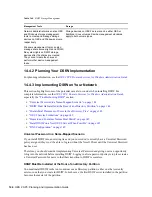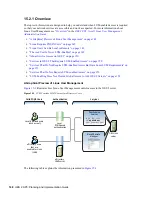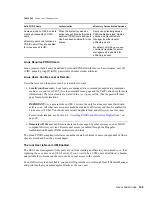
Users and Groups
15
147
15
Users and Groups
Networks exist to serve users and groups of users. Open Enterprise Server 2 provides strong user
and group management through eDirectory and its associated technologies.
Section 15.1, “Creating Users and Groups,” on page 147
Section 15.2, “Linux User Management: Access to Linux for eDirectory Users,” on page 147
Section 15.3, “Identity Management Services,” on page 156
Section 15.4, “Using the Identity Manager 3.6.1 Bundle Edition,” on page 156
15.1 Creating Users and Groups
All OES 2 services require that you create User objects to represent the users on your system. The
Linux User Management (LUM) and Samba components on OES 2 also require that you create a
LUM-enabled Group object that you can assign the users to.
In addition to these basic objects, it is usually helpful to organize your tree structure by using
Organizational Unit objects to represent the structure of your organization and to serve as container
objects to help manage the users, groups, servers, printers, and other organization resources you can
manage through eDirectory.
The
Lab Guide for OES 2
provides basic instructions for creating container objects as well as Group
and User objects in eDirectory.
For more information about Samba, see
Creating eDirectory Users for Samba
in the
OES2 SP3:
Samba Administration Guide
.
For detailed information on understanding, creating, and managing the various objects your
organization might require, see the
Novell eDirectory 8.8 Administration Guide
.
15.2 Linux User Management: Access to Linux
for eDirectory Users
Users and groups on NetWare servers are created in and managed through eDirectory; users and
groups on Linux servers are usually created locally and managed according to the POSIX (Portable
Operating System Interface) standard.
Because Open Enterprise Server provides services running on both Linux and NetWare, Novell has
developed a technology that lets eDirectory users also function as “local” POSIX users on Linux
servers. This technology is called Linux User Management or LUM.
The following sections outline the basic principles involved in Novell LUM and cover the following
topics:
Section 15.2.1, “Overview,” on page 148
Section 15.2.2, “Planning,” on page 153
Section 15.2.3, “LUM Implementation Suggestions,” on page 153
Содержание OPEN ENTERPRISE SERVER - CONVERSION GUIDE 12-2010
Страница 12: ...12 OES 2 SP3 Planning and Implementation Guide...
Страница 24: ...24 OES 2 SP3 Planning and Implementation Guide...
Страница 50: ...50 OES 2 SP3 Planning and Implementation Guide...
Страница 74: ...74 OES 2 SP3 Planning and Implementation Guide...
Страница 78: ...78 OES 2 SP3 Planning and Implementation Guide...
Страница 80: ...80 OES 2 SP3 Planning and Implementation Guide...
Страница 96: ...96 OES 2 SP3 Planning and Implementation Guide...
Страница 146: ...146 OES 2 SP3 Planning and Implementation Guide...
Страница 176: ...176 OES 2 SP3 Planning and Implementation Guide...
Страница 210: ...210 OES 2 SP3 Planning and Implementation Guide...
Страница 218: ...218 OES 2 SP3 Planning and Implementation Guide...
Страница 226: ...226 OES 2 SP3 Planning and Implementation Guide...
Страница 234: ...234 OES 2 SP3 Planning and Implementation Guide...
Страница 236: ...236 OES 2 SP3 Planning and Implementation Guide...
Страница 244: ...244 OES 2 SP3 Planning and Implementation Guide...
Страница 246: ...246 OES 2 SP3 Planning and Implementation Guide...
Страница 250: ...250 OES 2 SP3 Planning and Implementation Guide...
Страница 254: ...254 OES 2 SP3 Planning and Implementation Guide...
Страница 258: ...258 OES 2 SP3 Planning and Implementation Guide...
Страница 284: ...284 OES 2 SP3 Planning and Implementation Guide...
Страница 286: ...286 OES 2 SP3 Planning and Implementation Guide...
Страница 294: ...294 OES 2 SP3 Planning and Implementation Guide...
















































